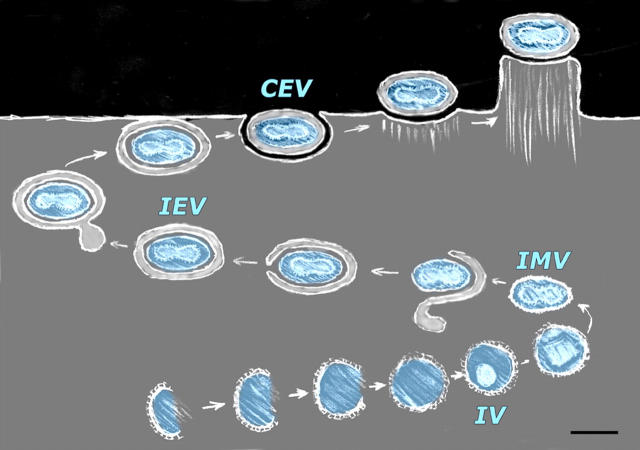Figure 1.
Stages of morphogenesis of vaccinia virus, the prototypical poxvirus, including the abbreviated names of each stage. Virogenesis begins with the formation (from crescent-shaped precursors) of a spherical immature virion (the “IV”). The core of the IV then condenses and differentiates to form a mature intracellular virion (IMV). The naked IMV is then enveloped by a collapsed cisterna of intracellular membrane (of unknown origin) to form an intracellular enveloped virion (the “IEV”). The IEV then behaves like a recycling endosome, moving along microtubules to the cell surface where it ultimately fuses with the plasma membrane to release an IEV derivative that is still wrapped in one of the two layers of its original envelope. Typically, this particle remains attached to the cell after discharge, thus is called a cell-associated enveloped virion or “CEV.” However, if and when it breaks free from the cell surface it is called an extracellular enveloped virion or “EEV” (not depicted). Some CEV's on the cell surface provoke oriented actin polymerization inside the cell (“actin tail formation”), thereby elevating themselves on the tip of a blunt microvillus. This promotes their fusion with neighboring cells and the spread of infection. Bar, 0.3 μm.

